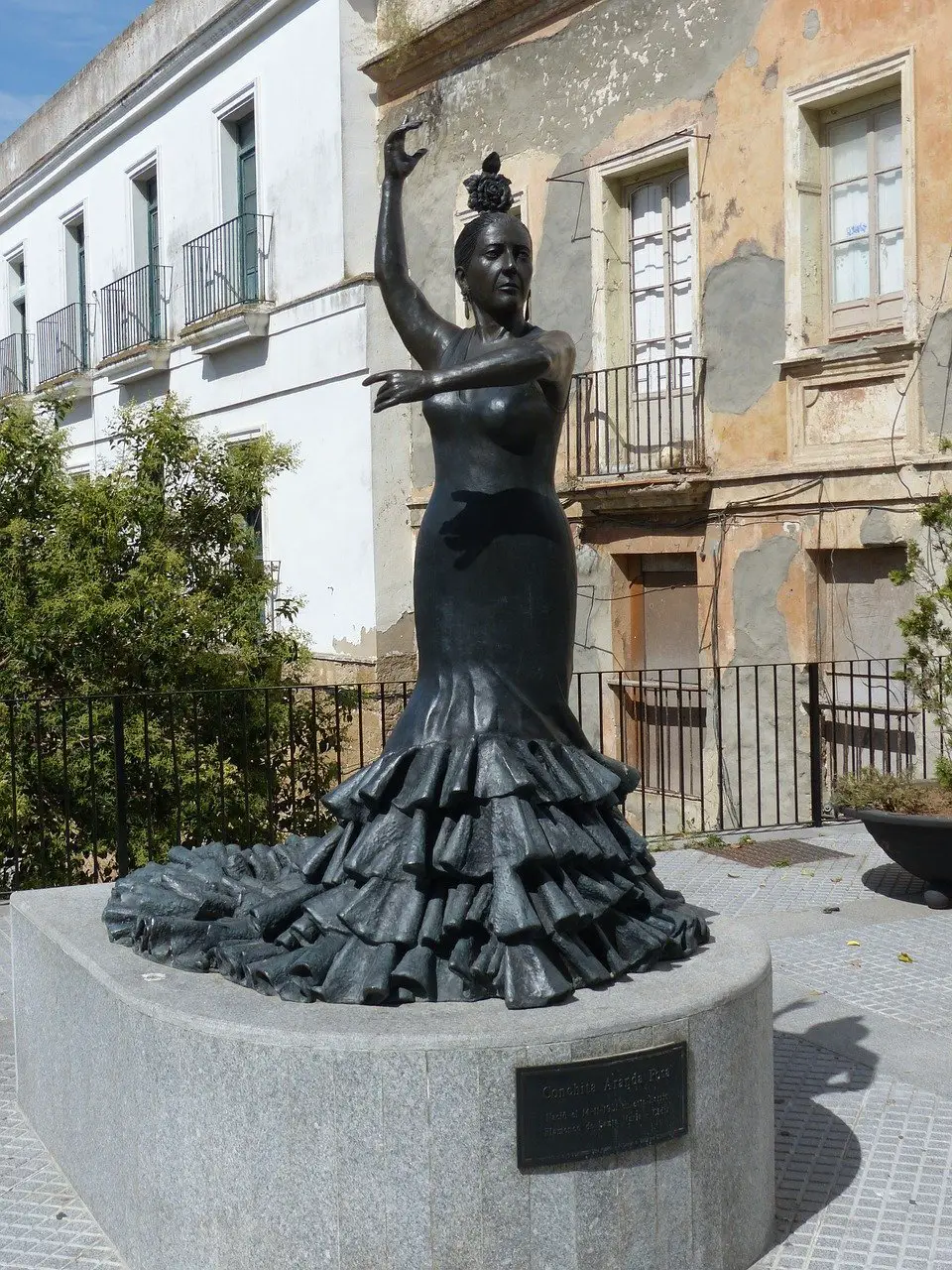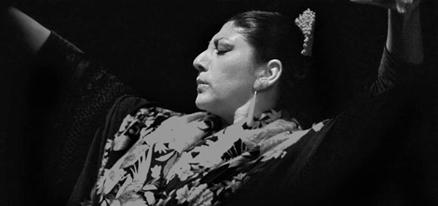Music and dance play a big role in the rich and diverse culture of Spain. You can see its influence in their daily lives. When you think of Spanish dances, images of the brightly colored costumes, tapping feet, and sounds of bagpipes and strumming guitars flash before your eyes. People often have this common misconception that Flamenco, the international sensation, is the only dance form existing in Spain. You will be surprised to learn that a plethora of traditional dances from different regions in Spain ruled the extensive history of Spanish dance. From the gypsy communities of the south to the Celtic heritage of Galicia in the north, the ethos of Spain is perfectly captured by these 15 traditional Spanish dances.
History of Spanish Dance
Just like Spain’s long and interesting history of colonization, traditional music, too, speaks volumes of the evolving, multi-faceted mosaic of various cultures. If you travel within Spain, you will observe a noticeable difference in the dance forms too. The Guanche civilization profoundly influences the traditional music of the Canary Islands, whereas the bagpipe music of Galicia and Asturias reflects the ancient Celtic heritage in the northern regions.

What started as the religious and ceremonial dances celebrating battles turned into a defined form of dances, centuries later during the Middle Ages. During the 15th century, the restrained dancing dissolved, giving way to a much joyful way of expression by dancing freely and without any reservations. During the Renaissance period, the folk dance continued to make considerable strides in the history of Spanish dance and even gained recognition internationally. Sometimes, these regional dances flourished on their own or merged with other regional dances to birth new Spanish dance forms. These traditional folk dances represent cultural heritage, music and, are reflections of the ethnic history of the Spanish people. They are popular all around the globe in unique forms and characteristics. These traditional Spanish dances are performed at dance gatherings and events with the accompaniment of lively music of the local region. These dances are not formal or regulated, and they slowly adapt over time.
The soaring popularity of the gypsy music and dance, Flamenco, reached its peak in the history of Spanish dance when the gypsies came to the Iberian continent in the Baroque period. What followed later is history. However, as the fame of Flamenco grew, the regional dances underwent a decline during the 20th century, when the dictator Francisco Franco banned all the regional things like languages, music, and dance. Thanks to the great works from the famous dancers like Carmen Amaya, Sara Pereyra Baras, Antonio Canales, Cristina Hoyos, Cecilia Gomez, Manuela Carrasco, and Joaquin Pedraja Reye, today, these traditional dances of Spain have reached boundless heights in the various international platforms representing dance.
Top Traditional Spanish Dances
Sardana
This traditional dance is a type of traditional dance and music where alternating men and women hold hands and dance in a circle to a live band called a cobla. Some people believe the origin of Sardana dates to ancient Roman times. However, it is a fact that by the 19th century, the dance was widespread in the Catalan districts of Garrotxa, Empordà, and Roselló. This famous group dance is a symbol of Catalan distinctiveness and is performed at joyous celebrations and exuberant public gatherings.
Paso doble
The Pasodoble is an energetic and accelerated paced Spanish dance based on the drama, sound, rhythm, and movement of a Spanish or Portuguese bullfight. Paso doble originated from France. In the eighteenth century, the music of Paso doble was used in the Spanish army infantry to establish the rhythm, speed, and tempo of the march. With modern times, the dance form evolved as a ballroom dance and is performed in pairs. The man represents the matador or the bullfighter.
Bolero
Bolero is one of the earliest and most traditional dances of the history of Spain. This moderately-paced Spanish dance of Cuba and Spain boasts of sudden pauses and sharp turns like the rhythms and beats of Rumba. In the 18th century, the two existing dances, the Sevillana, and the contradanza blended to create a new dance form, Spanish Bolero. Performed by a solo dancer or sometimes a couple, Bolera is usually accompanied by instruments like guitar and castanets.
Flamenco
Flamenco is synonymous with Spain and is more than a dance form. Flamenco is an art form that is recognized as part of the Masterpieces of the Oral and Intangible Heritage of Humanity by UNESCO. This passionate and glorious dance, Flamenco, first originated amongst the gypsy neighborhoods of Andalusia and was performed by dancing, singing, finger-snapping, guitar playing, and handclapping. Watching a Flamenco performance is a visual treat to the eyes, and when in Spain, you must not miss it.
Canary dance
Canary dance originally was the traditional dance of the locals residing in the mesmerizing Canary Islands. Soon, it gained popularity all across the European countries between the 1500 and 1600s. It is a fun and joyful dance that involves lots of jumping and energetic feet stamping. This dance is extremely famous during the festivities and galas in the fascinating Canary Islands.
El Vito
El vito is a sixteenth-century traditional folk dance of the Andalusia region. It gets its name from the famous Saint Vatron, who was the patron of dancers. Like Bolero, this typical song and dance was performed by women and included the different steps of the legendary bullfighting in Spain. The colorful costume consists of a brimmed hat and a jacket.
Matachines
You can trace the history of the Matachines to many centuries back when people believed that the original Spaniards introduced the dancing to the New World during colonial times as part of their rituals. Matachines are sword dancers who dressed in a vibrant ritual costume called the ‘bouffon’. The religious dancers in the group belong to the carnivalesque dance troupe. This group emerged in Spain in the early 17th century and was inspired by medieval European traditions of sword dance called the moresca. Today, the Matachines Dance is an enthralling dance, still performed by native Puebloans and Hispanic Catholics in different cities in New Mexico, U.S., and Peru. This Spanish dance form got its inspiration from both the European as well as the native cultures.
Sevillana
The Sevillana dance, originally from the southern city of Seville, is a type of folk music and dance that shares obvious parallels to Flamenco, the other key Andalusian dance. This is a fun dance and needs no formal training. People of all ages and sexes perform it during the festivals in southern Spain. Seville is the best place to appreciate and enjoy this Castillian traditional dance. The Sevillana folk dance is an emblem of Catalan identity and can be seen every year at the “Feria de Sevilla” and other festivals in southern areas of Spain. The excellent place to experience this incredible Castillian folk dance is the beautiful town of Seville.
Zarzuela
Dating back to the 17th century, a Zarzuela is a unique form of musical performance that involves songs with recitation and dance. The significant works of Francisco Barbieri and the Zarzuela Theatre in Madrid made Zarzuela popular in the 19th century. These theatrical shows include vocals in duets and trios and are performed in Spanish theatres today.
Aragonaise
Aragonaise, originating from Aragon, a region in Spain, is a “dance of Aragon”. In a musical concept, this dance is traditionally accompanied by a lot of handclapping, guitars, clackers or, castanets and other musical instruments.
Muiñeira
This is a traditional dance from the musical genre of the north-western region of Galicia. The Muiñeira or the ‘Miller’s Dance’ is an example of the Celtic influence on the local culture in this part of the world. Just like the Celtic music, Muiñeira uses lively tempo of bagpipes, known as a Qaita, to perform the soulful music.
Fandango
The Fandangois an energetic and lively dance performed in couples and shows remarkable resemblances to the bolero. Before Flamenco gained popularity, Fandango was Spain’s most loved dance. Fandangos or the shorter dances, Fandanguillos that dates to 1712, are traditionally accompanied by hand-clapping, guitar, and castanets, making it a festive show.
Zambra
Emerging from around the city of Granada in Andalusia, the beautiful and passionate Zambra was traditionally performed at weddings by the gypsies. This sensual style of Spanish dance is like the classical Arabic belly dance from the middle east, and unlike Flamenco, performers dance barefoot.
Jota
The Jota is one of the best-known forms of traditional Spanish dance, that probably originated in the region of Aragon. There are distinct forms in the other areas of Spain, like Castile, Valencia, Catalonia, and Galicia, where in each case it reflects the local culture and history. Also known as La Jota, the AragoneseJota was popular in the 18th and 19th centuries. Like the Waltz, Wota involves small jumps and fast foot movements. The dancers also play the castanets while dancing while the musicians in the troupe sing and play classic string instruments like the bandurria.
Cachucha
Like the Bolero, this form of Spanish dance was created in Cuba. Performed by Solo dancers, Cachucha is complemented by castanets while playing the Andalusian national song.
